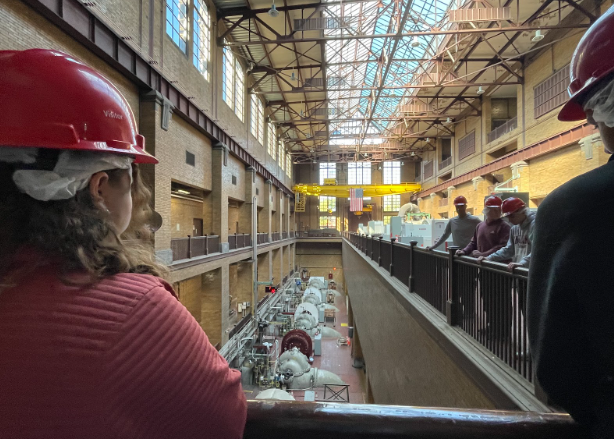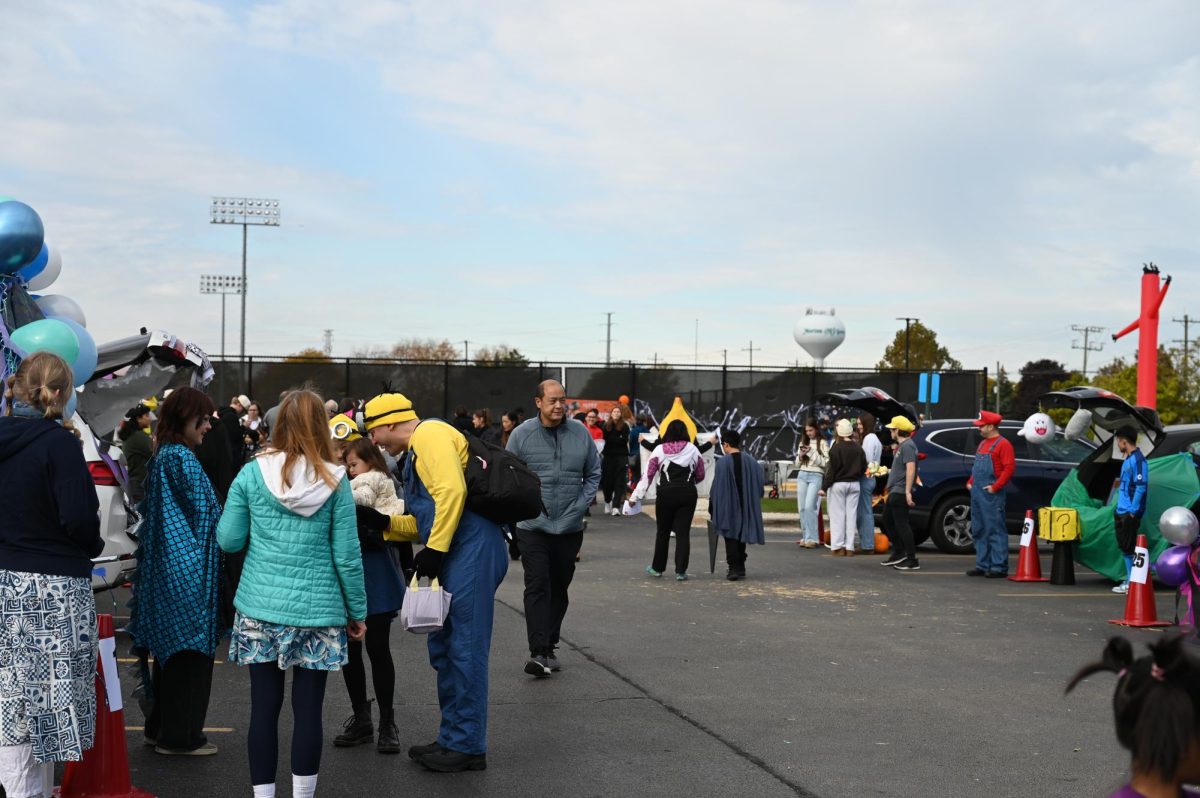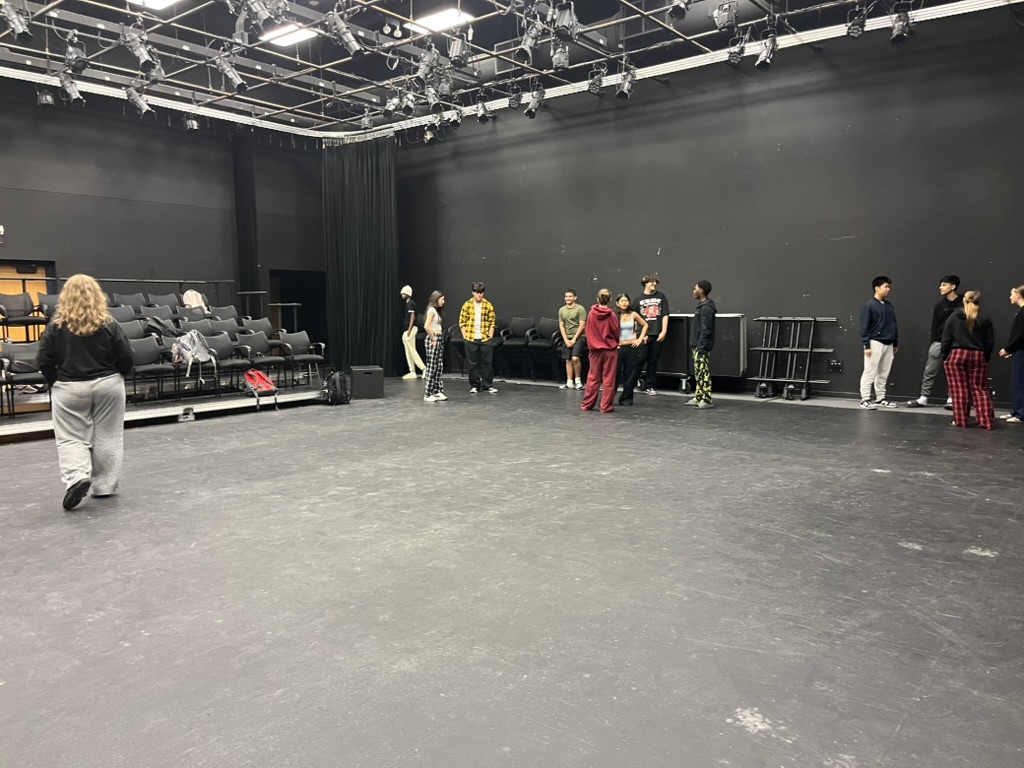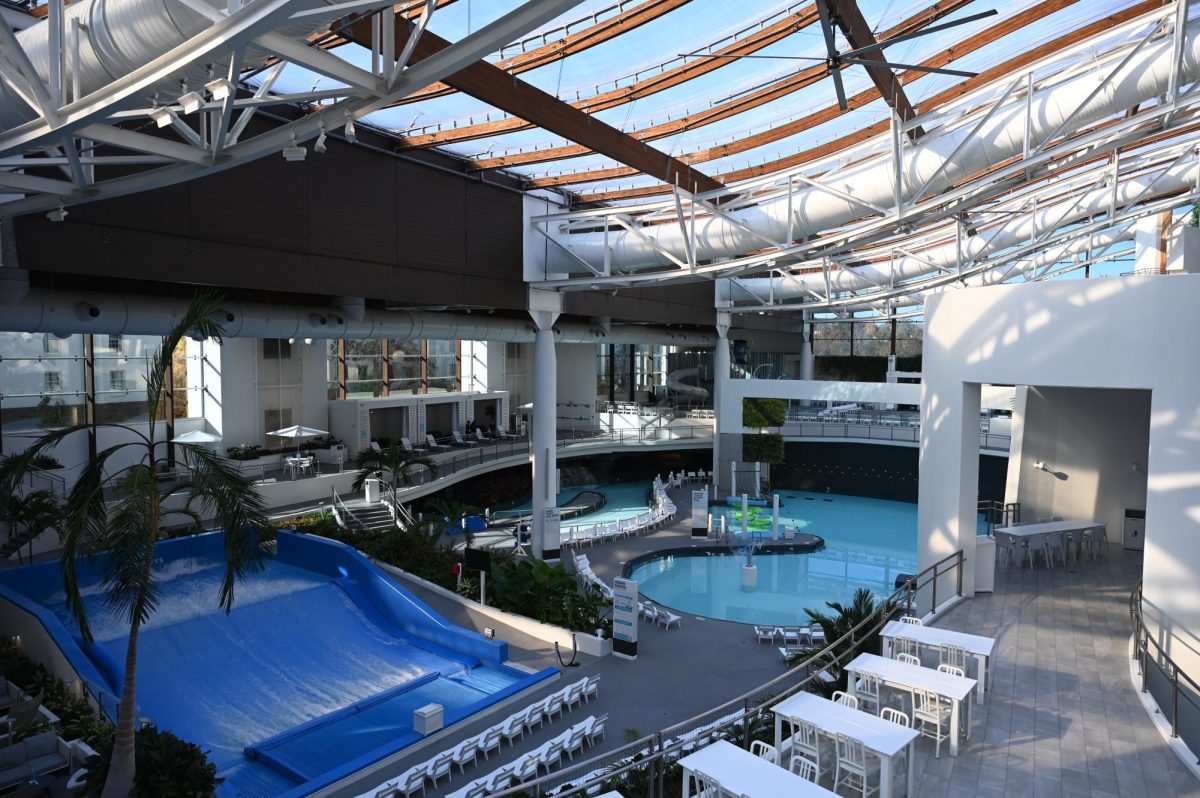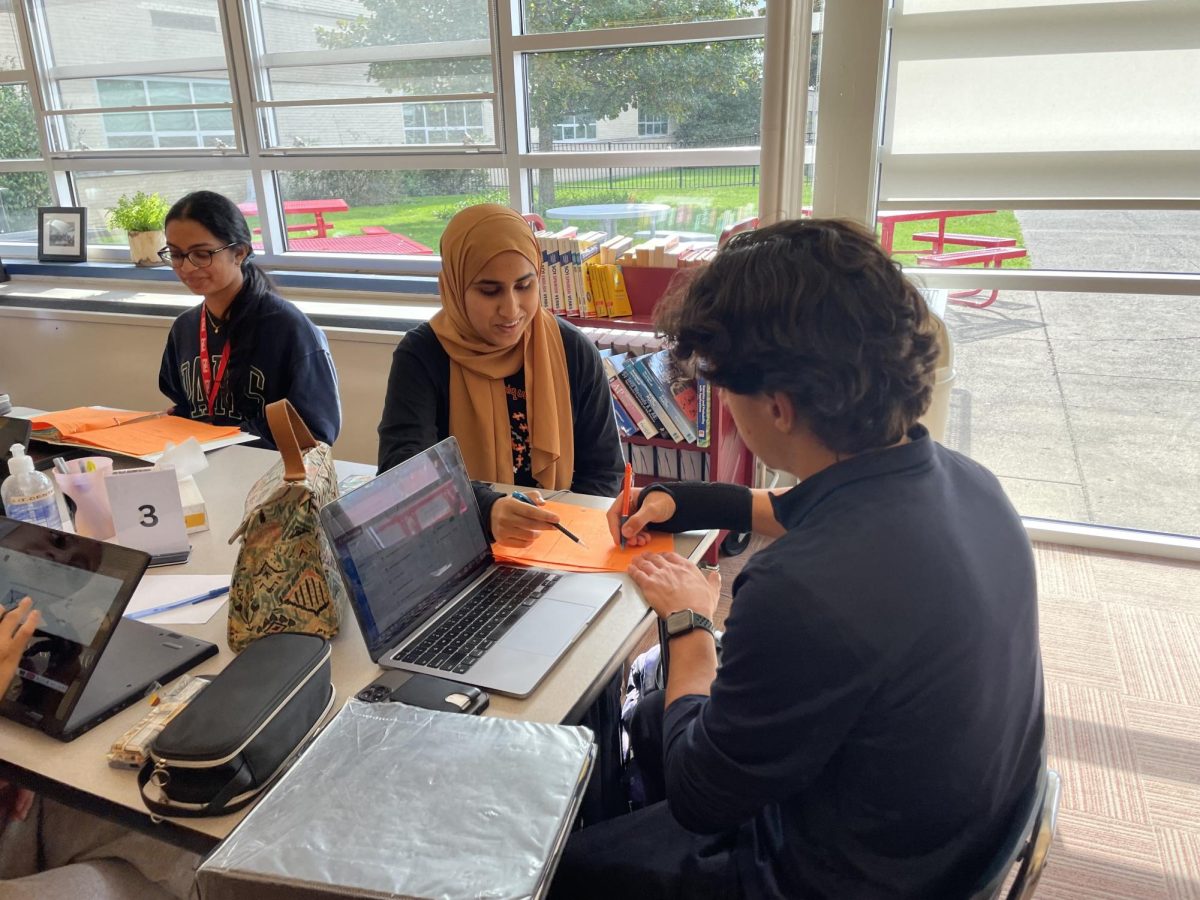When going through the intersection of Howard Street and McCormick Boulevard, there is a distinct smell in the air. That smell comes from the O’Brien Water Reclamation Plant, which serves about 1.3 million civilians. AP Environmental Science (APES) classes visited the O’Brien Water Reclamation Plant and canoed in the Chicago River on Oct. 9 and 10. The class went to the plant to learn about the water purification process, and went canoeing to perform water quality testing on the river.
Depending on the class teacher, students either went to the plant first or canoed and then exchanged activities. At the plant, students went on a guided tour around O’Brien and learned the process of filtering sewage and runoff water into the North Shore Channel.
APES teacher Chris Barnett explains why he believes the field trip is important to the class curriculum.
“This process is something that is critically important for the environment and human health. It is basic sanitation. Just like our garbage, people’s wastewater just magically disappears and no one gives it a second thought. Getting to see how this infrastructure works first hand is a great experience for everyone. Does it stink? Yes. But it is worth it,” Barnett said.
Treatment Plant Operator Jeffrey Kowar led the tours. He believes the tours are a way to raise awareness about the important work done in the treatment center.
“I think it’s important for the public to know what happens when they flush the toilet, where their water comes to be treated and just to be knowledgeable about the environment and what we’re doing here and how everything relates. I think it can be taken for granted in our society that we just let the water go down the drain and it’s taken care of, but we also need to be mindful of what we’re putting down the drain and make sure that it’s treatable by our wastewater treatment plants,” Kowar said.
The students began their canoeing starting at Oakton Street, then Belmont and finally Montrose. At each stop students would do their assigned chemical or quality testing on the water, which included pH testing, nitrate testing, and phosphate testing among others.
“My favorite part of the trip was canoeing in the Chicago River. That was really fun. I really enjoyed almost running into a tree multiple times, it was great. It also helped me learn how adaptable I am. Once I’d really gotten into the groove of the canoe, I surpassed everyone in speed,” senior Marvin Rhone said.
Rhone performed the dissolved oxygen test where he and his group collected water samples and then inserted a tablet of dissolved oxygen into the tube. They waited until it dissolved and from there they determined how much dissolved oxygen was in the water. The results indicate if aquatic life can survive in the Chicago River.
When asked if he had a message for District 219, Kowar took the opportunity to give the community some reminders.
“Be mindful of your fats, oils and greases. Dispose of them in the garbage and not down the drain. Be mindful of your water usage and conserve as much as you can,” Kowar said.


